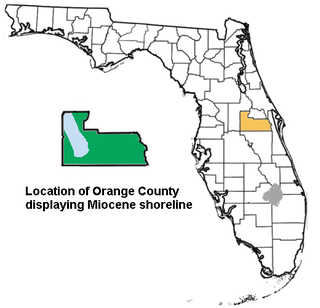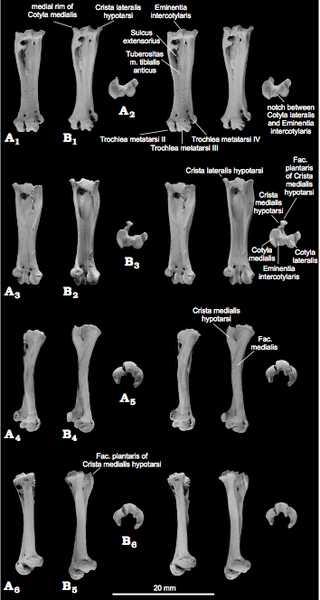
Grebes are aquatic diving birds in the order Podicipediformes. Grebes are widely distributed freshwater birds, with some species also found in marine habitats during migration and winter. Some flightless species exist as well, most notably in stable lakes. The order contains a single family, the Podicipedidae, which includes 22 species in six extant genera. Although, superficially, they resemble other diving birds such as loons and coots, they are most closely related to flamingos, as supported by morphological, molecular and paleontological data. Many species are monogamous and are known for their courtship displays, with the pair performing synchronized dances across the water's surface. The birds build floating vegetative nests where they lay several eggs. About a third of the world's grebes are listed at various levels of conservation concerns—the biggest threats including habitat loss, the introduction of invasive predatory fish and human poaching. As such, three species have gone extinct.

The pied-billed grebe is a species of the grebe family of water birds. Because the Atitlán grebe has become extinct, the Pied-Billed Grebe is now the sole extant member of the genus Podilymbus. The pied-billed grebe is primarily found in ponds throughout the Americas. Other names of this grebe include American dabchick, rail, dabchick, Carolina grebe, devil-diver, dive-dapper, dipper, hell-diver, pied-billed dabchick, pied-bill, thick-billed grebe, and water witch.

Podilymbus is a genus of birds in the Grebe family, the genus name is derived from Latin Podilymbus, a contraction of podicipes —the origin of the name of the grebe order—and Ancient Greek kolymbos, "diver".

The Atitlán grebe, also known as giant grebe, giant pied-billed grebe, or poc, is an extinct water bird, a relative of the pied-billed grebe. It was endemic at the Lago de Atitlán in Guatemala at an altitude of 1700 m asl. It was described in 1929 by Ludlow Griscom based on a specimen collected in 1926 and had been overlooked in the past. American ecologist Anne LaBastille observed the decline of this species over a period of 25 years. It was declared extinct by 1990.

The St. Croix macaw or Puerto Rican macaw, is an extinct species of macaw whose remains have been found on the Caribbean islands of St. Croix and Puerto Rico. It was described in 1937 based on a tibiotarsus leg bone unearthed from a kitchen midden at a pre-Columbian site on St. Croix. A second specimen consisting of various bones from a similar site on Puerto Rico was described in 2008, while a coracoid from Montserrat may belong to this or another extinct species of macaw. The St. Croix macaw is one of 13 extinct macaw species that have been proposed to have lived on the Caribbean islands. Macaws were frequently transported long distances by humans in prehistoric and historical times, so it is impossible to know whether species known only from bones or accounts were native or imported.

Palaelodus is an extinct genus of bird of the Palaelodidae family, distantly related to flamingos. They were slender birds with long, thin legs and a long neck resembling their modern relatives, but likely lived very different livestyles. They had straight, conical beaks not suited for filter feeding and legs showing some similarities to grebes. Their precise lifestyle is disputed, with researchers in the past suggesting they may have been divers, while more recent research suggests they may have used their stiff toes as paddles for swimming while feeding on insect larvae and snails. This behavior may have been key in later phoenicopteriforms developing filterfeeding bills. The genus includes between five to eight species and is found across Europe, Australia, New Zealand, Asia and possibly South America. However some argue that most of the taxa named from Europe simply represent differently sized individuals of one single species. Palaelodus was most abundant during the Late Oligocene to Middle Miocene periods, but isolated remains from Australia indicate that the genus, or at least a relative, survived until the Pleistocene.
David William Steadman is a paleontologist and ornithologist, and serves as the curator of ornithology at the Florida Museum of Natural History at the University of Florida.
Physornis is an extinct genus of giant flightless predatory birds of the family Phorusrhacidae or "terror birds", most closely related to Paraphysornis, that lived in Argentina. The type species is P. fortis. It lived during the Middle to Late Oligocene (Deseadan). Few fossils are known, but the available material suggests that Physornis was one of the largest phorusrhacids.

The Orange County paleontological sites are assemblages of Late Pleistocene vertebrates occurring in Orange County, Florida.

Kurochkin's pygmy owl is an extinct species of pygmy owl that existed in what is now California, U.S.A. during the Late Pleistocene Epoch.
The Bermuda flightless duck is an extinct species of flightless duck which was endemic to the island of Bermuda in the North Atlantic Ocean. It was described in 1960 by Alexander Wetmore, from Late Pleistocene subfossil remains collected in 1956 by Bermudan ornithologist David Wingate, at the Wilkinson Quarry in Hamilton Parish. The holotype is a left tarsometatarsus held in the National Museum of Natural History in Washington, D.C.

Coragyps occidentalis, the Pleistocene black vulture, is an extinct species of New World vulture that lived throughout North and South America during the Pleistocene. It was formerly thought to be the ancestor to the modern black vulture, but is now thought to have evolved from it; the modern black vulture is paraphyletic with respect to it.

Thiornis is a fossil genus of Middle Miocene grebe known from a nearly complete specimen from Libros, Spain. Originally classified as a type of moorhen, Thiornis has since been classified as a species of grebe. The overall anatomy of the bird is identical to modern grebes. It contains a single species, T. sociata.
Pliolymbus is a fossil genus of grebe known from the Late Pliocene to Early Pleistocene of United States and Mexico. It is known from a single species, P. baryosteus.
Aechmophorus elasson is an extinct species of grebe recovered from the Piacenzian age of the United States.
Podilymbus majusculus is an extinct species of grebe recovered from the Piacenzian age of the United States.
Podiceps oligoceanus is an extinct species of grebe possibly from the Neogene period which the specimen has been found in the United States.
Podiceps dixi is a possible extinct species of grebe from the United States.
Podiceps howardae is a possible extinct species of grebe from the United States, possibly a larger and earlier form of the horned grebe.
Podiceps discors is an extinct species of grebe from the Upper Pliocene of western North America. It was similar to the black-necked grebe.








